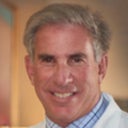In general, 200 cc per breast is typically the upper limit of fat injection recommended by most plastic surgeons. It is not that more cannot be injected; but on average, this has been determined to be the most that can be expected to live during one transfer. Multiple transfers would be required for additional cc's. In general, the abdomen and thighs are preferred donor sites but fat from other areas can be used.



